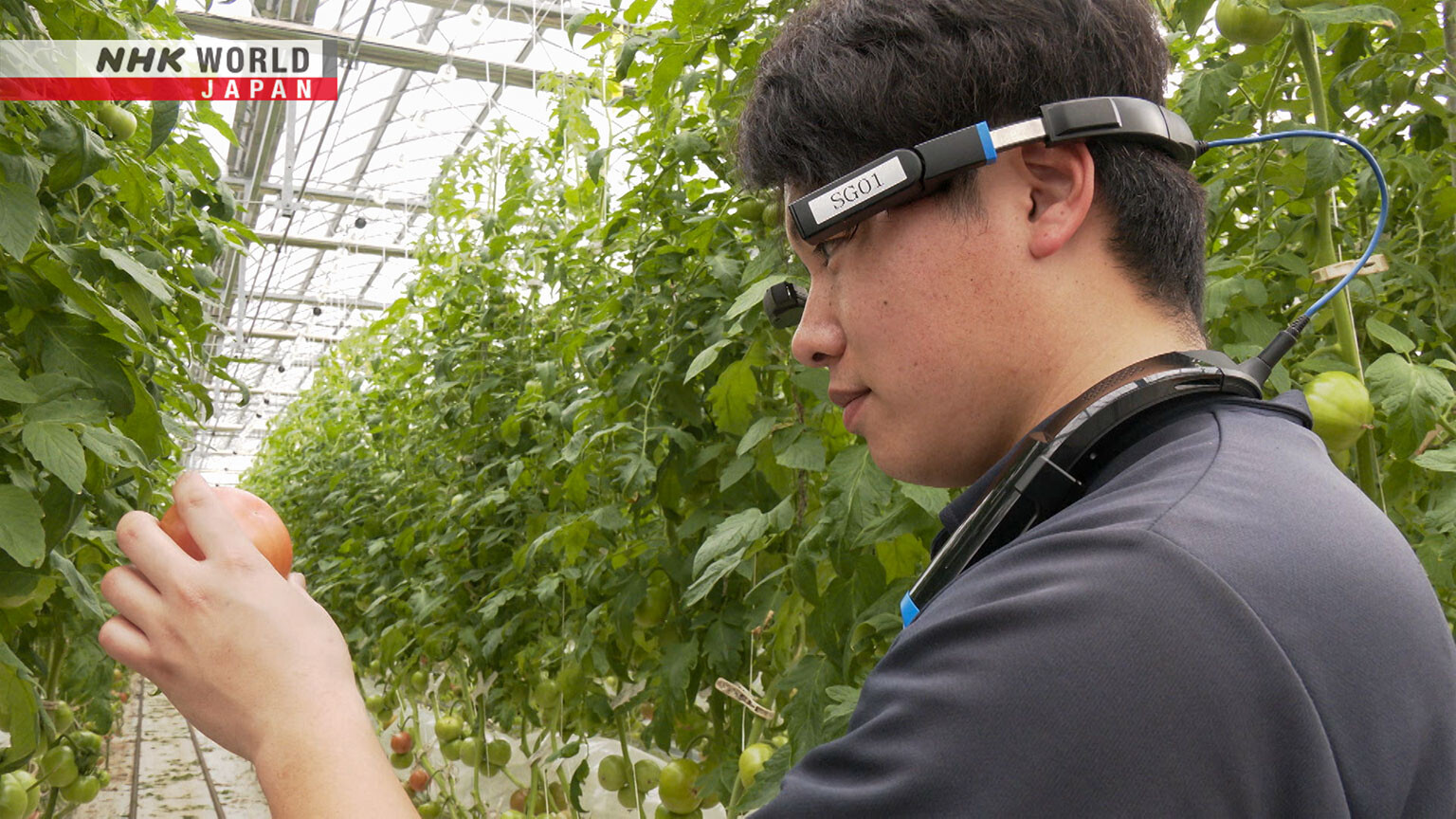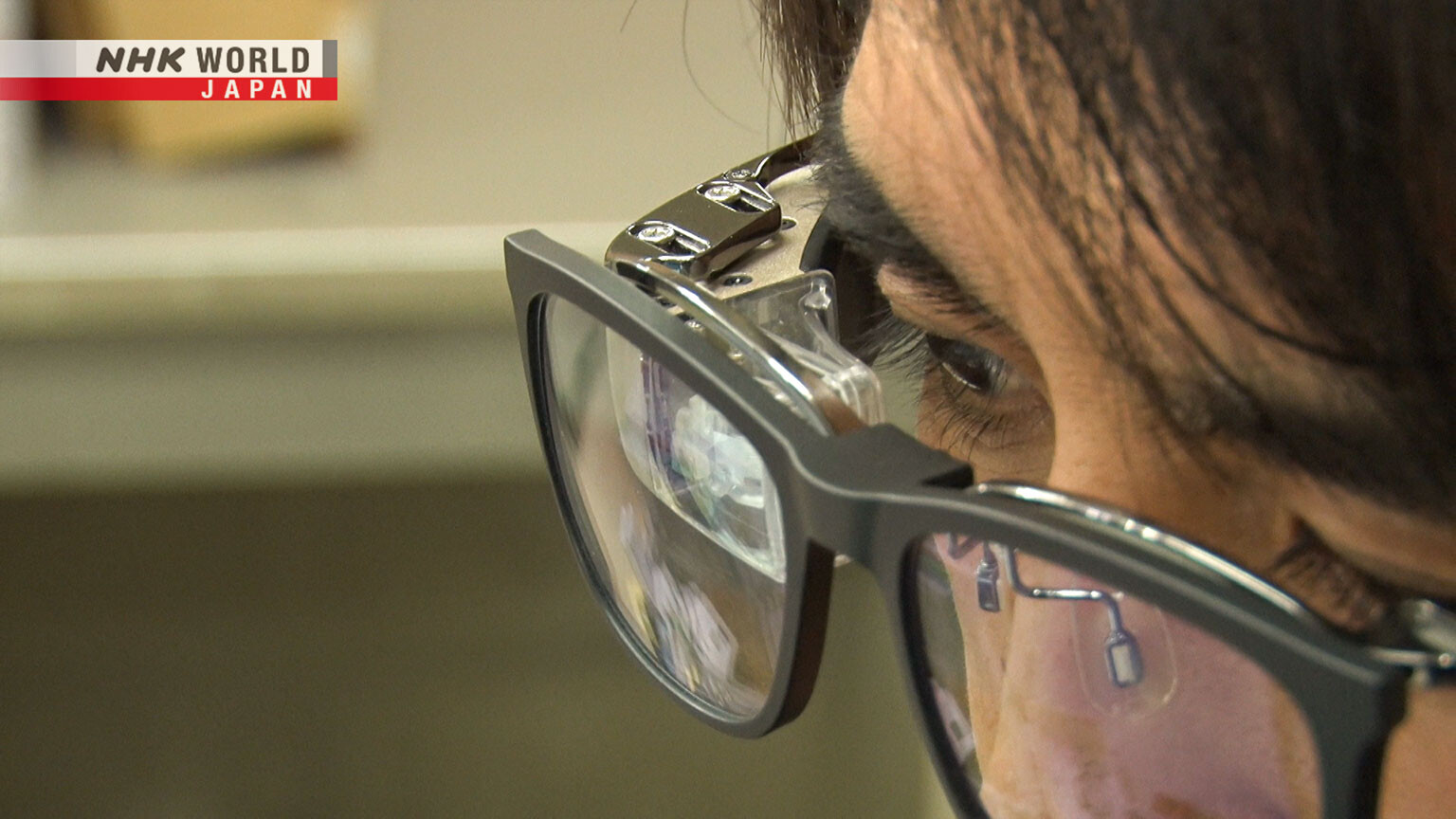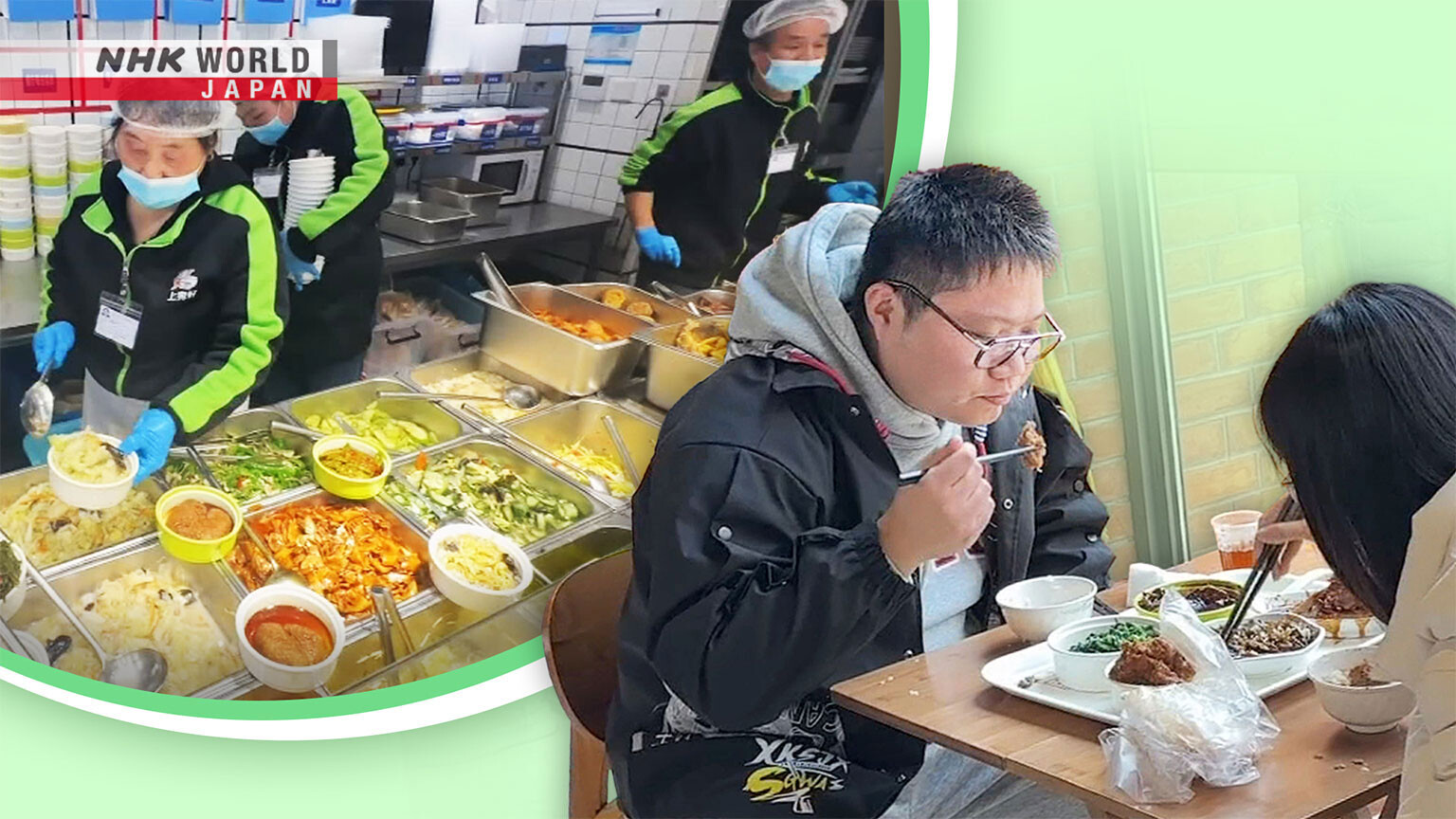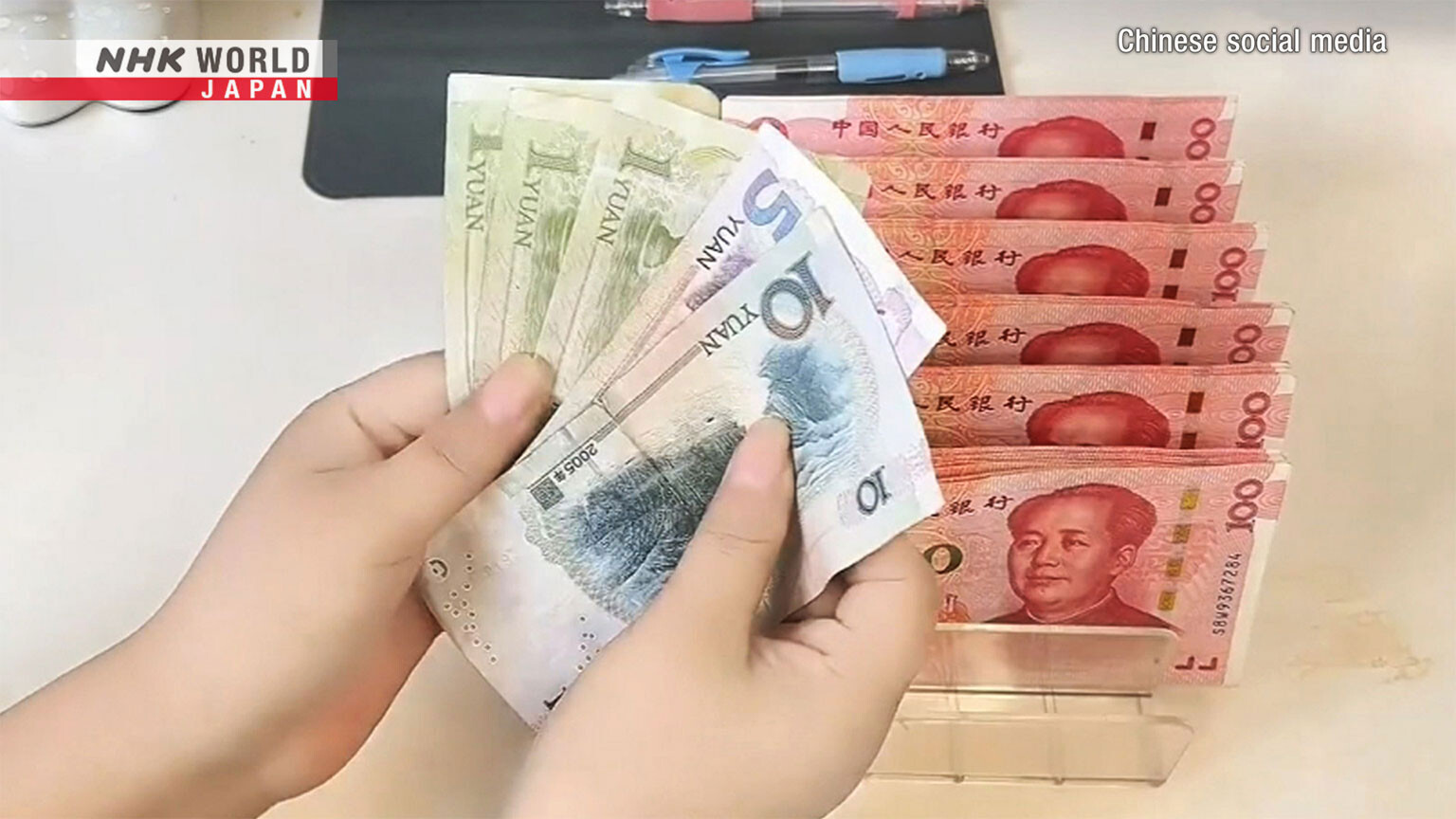Looking to the Future with Eyewear Tech
[On-Site Report: Looking to the Future with Eyewear Tech]
This episode looks at how combining technology with eyewear can make daily life easier for people with and without visual impairments.
*Subtitles and transcripts are available for video segments when viewed on our website.
On-Site Report: Looking to the Future with Eyewear Tech


Global Trends: Chinese Youth Find Frugal Wisdom with Age
Young people in China are having a hard time getting by as work dries up. The harsh economic environment has many changing their spending habits. Some are also looking to their elders for ways to save.


In Focus: Automakers Shift Gears as EV Sales Slow
Electric vehicle sales are slowing. And automakers that bet big on an EV boom are having to change gears. We take a look at the situation and how companies are adapting.
Transcript
The recent New York International Auto Show saw over 20 global brands showcase their latest models.
But this year, EVs shared center stage with hybrid vehicles,
which combine an internal combustion engine with an electric motor.
The change is a reflection of softening EV demand.
The global growth rate for EV sales slowed last year to just over 25 percent.
But the rate for hybrids accelerated to over 30 percent.
The demand phase from early adopters who like to buy and try new technology is now coming to an end.
The next customer base is people who buy products that offer practical benefits.
But for them, EVs are expensive and inconvenient as the recharging infrastructure isn't fully set up.
Current EVs are also not attractive enough for those buyers.
Consumer concerns about the practicality of electric vehicles
has some shoppers giving hybrids a second look.
It's not that more people aren't choosing EVs.
"It's just that the growth is not as fast as perhaps many in the industry anticipated.
And that's causing quite a lot of concern within the industry.
Hybrids seem to be the way forward.
People who don't want to make the jump all the way to an electric vehicle lot, but...
but don't just want a traditional gas-powered car.
They're starting to look at hybrid."
Many automakers are now tapping the brakes on bold plans for EVs.
Mercedes-Benz made a splash a few years ago with its aim of an all-electric lineup by 2030.
The firm now says it will offer combustion engine vehicles...
"Well into the 30s, we have the ability and the flexibility to cater to all customer needs."
Meanwhile, Ford Motor is postponing a 12-billion-dollar EV investment and expanding its hybrid offerings.
"What you're seeing is a lot of brands hedging their bets.
We're going to continue with some gas-powered cars.
We're also going to look at hybrids.
And alongside that, we're also going to continue to roll out our new EV strategy.
So a lot of people are hedging in the market.
There's a lot of uncertainty and a lot of unease as well as people are trying
to handle all these technological changes and still make money."
The shifting landscape is also jolting the world's largest car market, China.
Automakers there are locked in a brutal price battle to win a share of slowing EV sales.
The country's biggest electric vehicle manufacturer BYD
recently launched a discount campaign under the slogan "cheaper than gasoline cars."
It has been slashing prices for a range of models, and its rivals have been doing the same.
The fierce competition in China is only heating up.
Major Chinese smartphone maker Xiaomi recently entered the EV market.
Its vehicle is priced to undercut US carmaker Tesla.
It got almost 90,000 pre-orders within the first day of sales.
Global automakers are still betting on growing demand for electric vehicles.
But the current speedbump could push mass adoption further down the road.
Lavish spending and impulse shopping.
For many Chinese, these have fallen out of favor for a new trend that's taken hold:
What's known as "rational consumption."
People are increasingly taking a hard look at their budgets and reining in purchases.
I've really cut back, I now spend about half what I used to.
I get off-label items instead of name-brand goods.
I'm more careful about buying clothes online, I always check them in store first.
Quality and cost-effectiveness are most important to me now.
I think I'm more sensible about spending than I was before.
Videos about saving money have become viral hits.
China is mostly a cashless society.
But here, a person uses paper notes to make a monthly budget more tangible and easier to keep.
For this month I have about 330 dollars to spend.
That's roughly 83 bucks a week.
The focus on frugal living comes as Chinese youth face a harsh job market.
The unemployment rate for people in urban areas age 16 to 24 was over 15 percent in February.
Amid these tough circumstances, young Chinese are turning to services targeting the elderly.
Cafeterias like this one are a prime example.
They were originally meant to provide low-priced meals for seniors through government support.
But there are no age restrictions on diners,
and a growing number of young people have been making the most of it.
They can get a set meal starting at about three dollars.
We want value for money, so, eating here is a great option.
The trend has been welcomed by seniors, who are happy to share a meal with younger patrons.
They help create a good atmosphere.
Everyone I know is glad they're joining us.
The cafeteria is meant for seniors, but even young people need this kind of service these days.
I think it's great that it's helping a wide range of people.
Businesses that provide services to the elderly have taken note of the trend.
At this nursing home in Hangzhou in eastern China...
Some of the residents are in their 20s.
They're here through a program offered by the facility.
It lets young people live in the home rent free.
In exchange, they just need to spend at least 10 hours a month helping out the older residents.
I think the program provides a good model that allows us to save money.
The service has been well received.
Sixteen people are currently taking advantage of the offering.
Senior residents say they've been glad to have them...
The head of the facility plans to expand the program.
The elderly can make fond memories, and the youth can gain a wonderful experience.
It's a win-win situation.
The struggling economy has been difficult for young Chinese.
But it's also created unexpected trends that are bringing benefits for people across generations.
A specially designed headset allows inexperienced workers to receive support from experts located far away.
And an eye-opening device is making it possible for people with certain visual impairments
to experience seeing like they never have before.
Today's On-Site Report focuses on how advances in eyewear technology
are helping people to see life through a whole new lens.
This tomato farm in Tochigi Prefecture is using a range of high-tech devices to help grow quality produce.
Workers here wear special headsets that allow them
to receive detailed instructions from experts in another part of the country.
Let's see how your roots are doing.
How's it look?
Ah, okay, it seems to be pretty healthy.
The agriculture experts providing the guidance are located several hours away in Kanagawa prefecture.
This sort of guidance is especially needed in modern agriculture -
where new technologies and changes in farming methods are constantly being introduced.
By wearing these headsets, farmers and instructors can share video and audio data in real time.
See the one I'm circling here?
You should pick them when they turn this color.
I understand. Like that one?
Yes.
In addition to crop growth information,
sensors placed strategically throughout the green house
allow the farm to share a wide range of data including temperature,
humidity, sunlight, and CO2 levels with the experts in the guidance center.
The reason this distance-consulting system was introduced
is because Japan is not only facing a shortage of farmers,
it also lacks the experts needed to train and support them.
It's really reassuring to know we can provide guidance whenever farmers need it.
It helps reduce the barriers that prevent a lot of people from going into farming.
By creating a system that can efficiently and effectively share specialized knowledge with farms across the country,
we hope to solve one of the main issues that have led to a labor shortage in the agriculture industry.
While our in-person visits have dropped, communication has increased.
Being able to connect with multiple farms on the same day is a massive step forward.
Of the 7 people working on this farm, most of them have little to no experience working in agriculture.
Tomato farmer Tanida Wataru only has one year of experience under his belt
and often turns to the guidance center for help.
I'd like you to take a look at this tomato.
I'm trying to grow them to be L size,
but most only grow to be small or medium like this.
My guess is that they're probably not getting enough water,
but I wanted to run it by you first.
I think you're right.
- But, be careful, because too much water can lead to splitting.
- Ahhh...
Start off by giving them quite a bit of water.
From there, gradually reduce it until you reach what you feel
is the right amount to keep them growing without damaging them.
Okay, I'll give that a try. Thank you!
The growing conditions of our crops are constantly changing.
Having to adapt to them on a daily basis can be pretty stressful...
But with technology like we have now,
you can get expert help anytime,
so it makes things a lot easier for beginners like me.
This eyeglass shop is located in Gunma Prefecture.
Employee Nomura Tendo is in charge of managing the shop's inventory.
Born with severely dislocated lenses in both of his eyes,
he has dealt with low-vision his entire life.
Just to give you an idea of the distance I can actually see something at -
I have to get about this close to the screen.
And even then, I can only somewhat make out what's in this small area right here.
However, with a clever application of technology,
he can now see much more clearly than ever before.
Images taken through a smartphone camera are sent to a device attached to one of the lenses on his glasses -
allowing him to see a crisp and clear image.
This is how Nomura's computer screen now appears to him through the specially outfitted glasses.
He first began using them about 4 years ago.
What surprised me the most was being able to see what people's faces look like.
Before that I really couldn't make out much detail at all.
It wasn't until after getting my hands on this technology
that I was actually able to see and recognize my parents' faces for the first time.
I can't begin to explain how amazing it was to really see for the first time.
It really made me happy!
A special mini projector attached to one of the lenses on Nomura's glasses,
shows him whatever the connected digital camera is focused on.
The projector uses a tiny, low-power RGB laser beam to send images directly into the eye.
Normally, when light enters the eye it hits the lens,
which then focuses it onto the retina...
But with this device, images are projected directly onto the retina
using a thin laser beam that travels in a straight line.
Therefore, the natural focusing function of the eye is not required.
The system was created by a company that develops and sells lasers.
Even someone with astigmatic vision can make a small hole with their fingers
and get a clear look at the moon.
We're doing something similar to that but with a narrow laser beam.
So, even people with lens-related issues like astigmatism can now see images quite clearly.
The technology to project images directly onto the retina using a laser
was first developed in the United States in the 1990s.
However, at the time, the equipment needed to do it was large and bulky,
making it unsuitable for practical use.
The inspiration for making it smaller came from the technology used in CD players.
Sugawara's company was able to apply that technology to create a compact projector
that uses a small laser similar to the ones used to read information from CDs.
It was pretty easy for our engineers to take that older technology
and adapt it for use in retinal laser projection.
Because we were able to make everything more compact,
we could make it small enough to comfortably fit on a pair of glasses.
Ophthalmologists who have been conducting research on low vision
are also paying attention to the potential uses of this technology.
I thought that if we applied this technology to patients
with irregular corneal astigmatism or corneal clouding,
they might be able to obtain even slightly better visual acuity.
On the other hand, it probably won't work for people who have retinal or nerve abnormalities.
But you won't really know without trying,
so I hope there are more opportunities for people to try using this technology themselves.